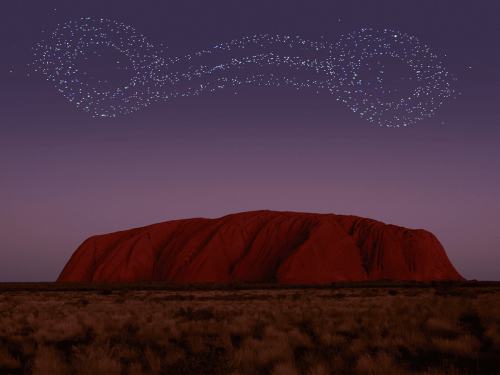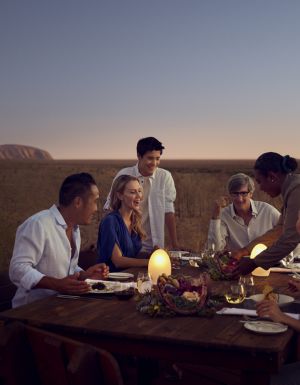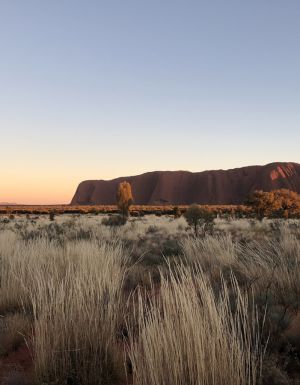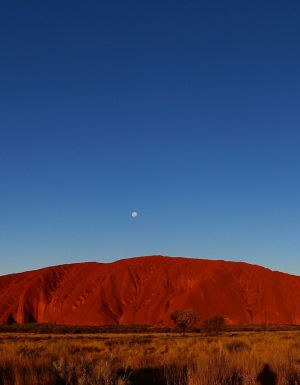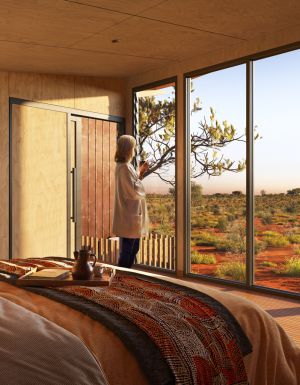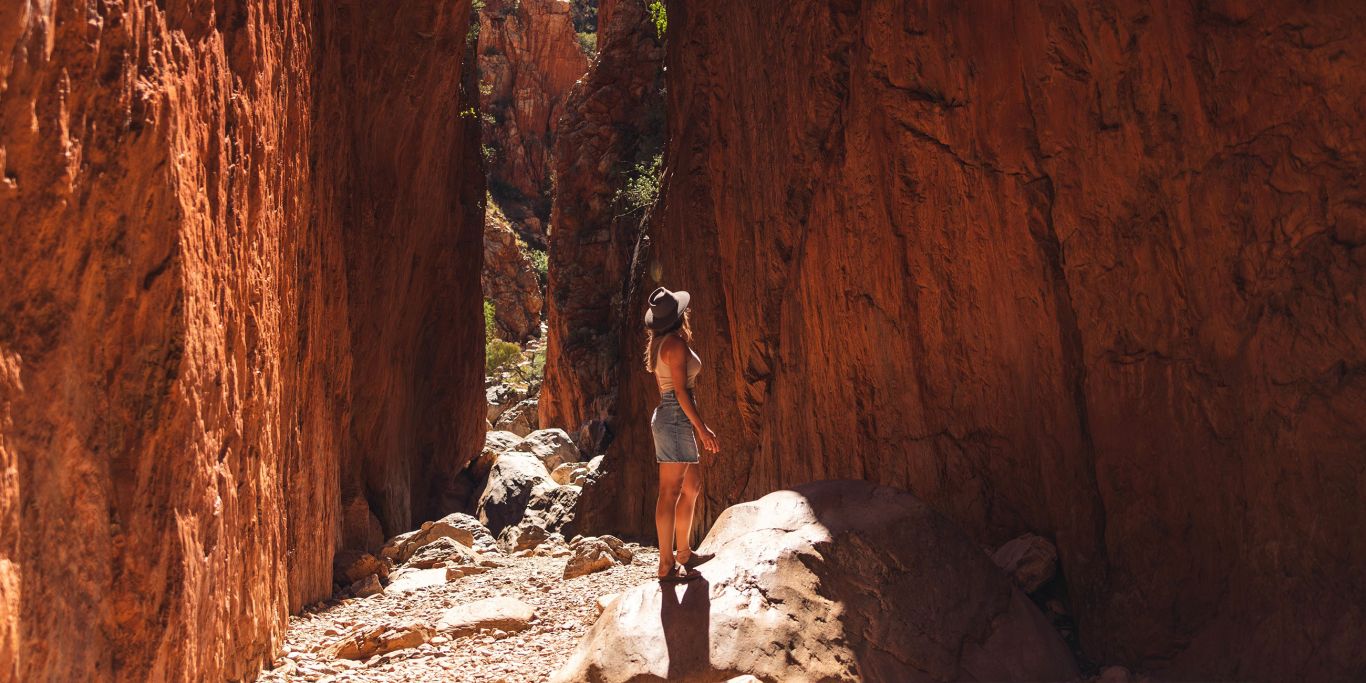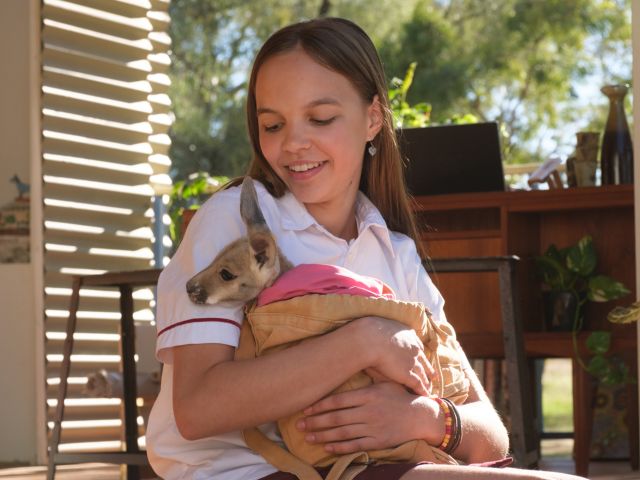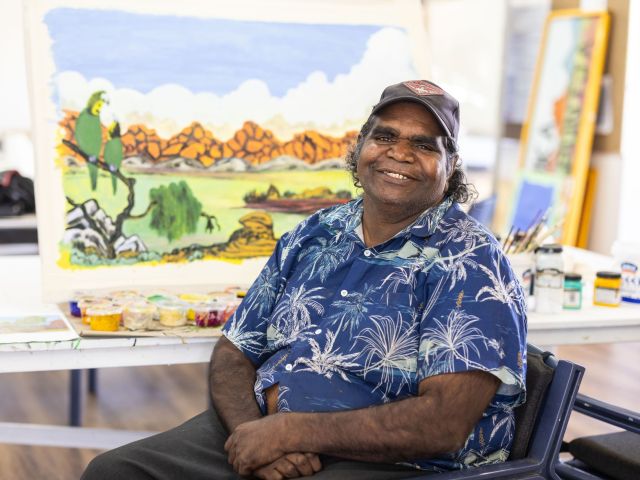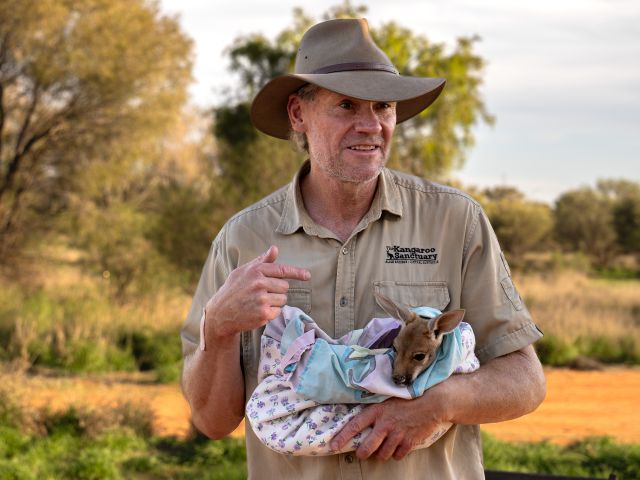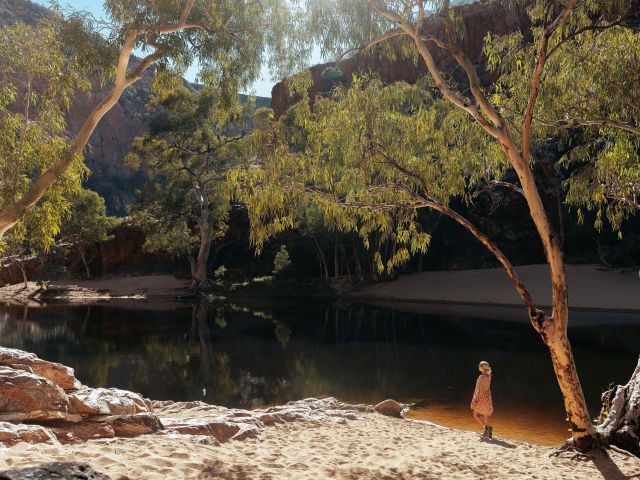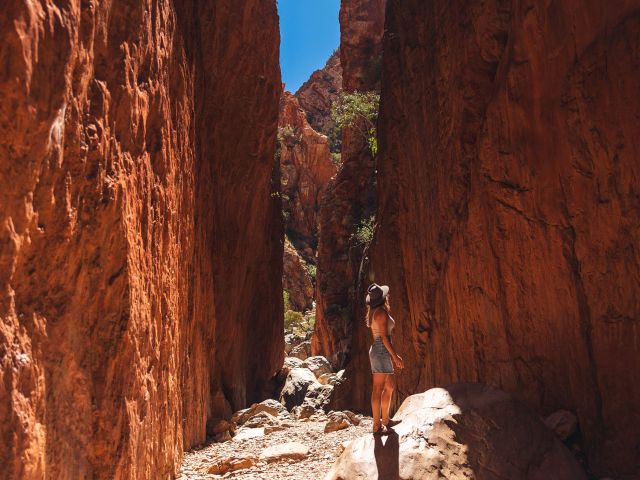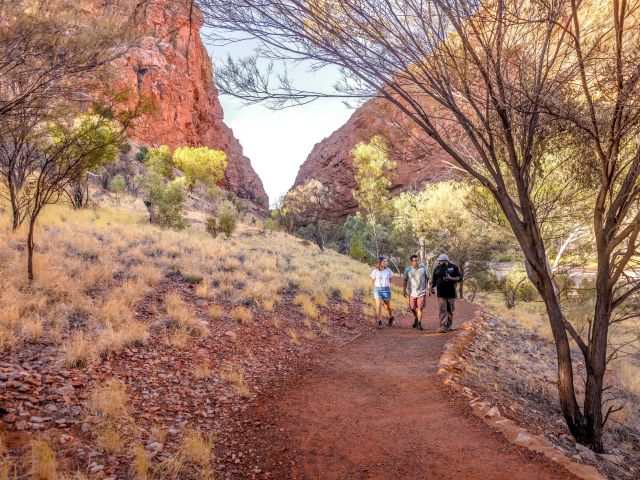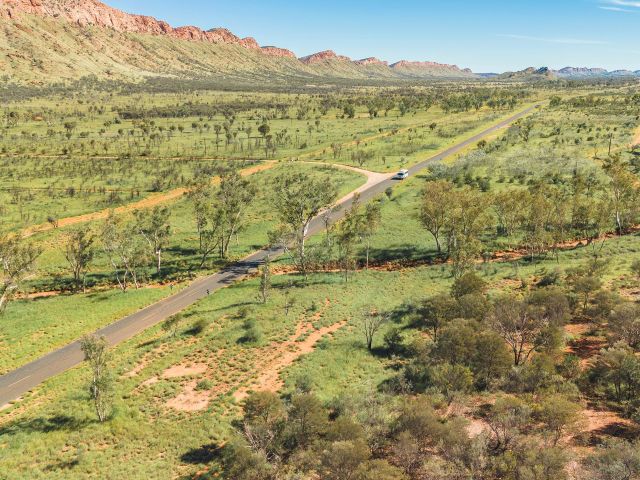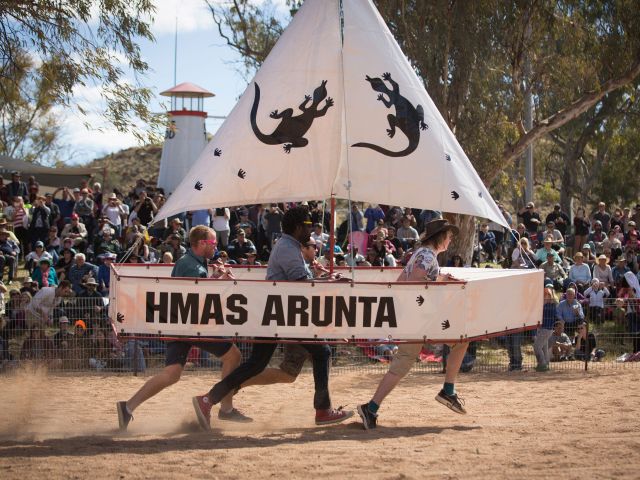Discover the new cultural storytelling experience that is lighting up Uluṟu each night.
For the first time, visitors are receiving a privileged invitation to personally experience a Tjukurpa story, with the launch of Wintjiri Wiṟu in May this year. Uluṟu’s newest attraction is also its most culturally significant, telling a chapter of the ancient Mala story from Kaltukatjara to Uluṟu.
Aṉangu share the Mala story, from Kaltukatjara to Uluṟu, through a drone, sound and light show designed and produced by RAMUS.
The Wintjiri Wiṟu backstory
Venturing into the ancient Uluṟu-Kata Tjuṯa National Park is something you will never forget. Sacred to the Aṉangu people, Uluṟu holds secrets to many Aṉangu creation stories, or Tjukurpa (pronounced ‘chook-orr-pa’).
Tjukurpa is the foundation of Aṉangu culture and is what connects the Yankunytjatjara and Pitjantjatjara people to Country and their ancestors. It is all-encompassing. From important lessons on survival, to relationships and how to behave and the origins of the universe.
Passed on verbally through generations, you won’t find a book on Tjukurpa, and equally, you won’t be able to learn Tjukurpa stories on a whim. Aṉangu only share Tjukurpa with people they trust as it’s an intimate look into their culture.

Not only is Wintjiri Wiru the world’s largest permanent drone show, with more than 1100 of the unmanned aerial vehicles taking flight, but it’s also the first time an Indigenous story has been told through lights, lasers, projection and drone technology at this scale and frequency.
Meaning a ‘beautiful view out to the horizon’, the idea of Wintjiri Wiru came when light artist Bruce Ramus, through his world-renowned studio RAMUS , proposed to tell the Mala story using this technology.

The formation of the Wintjiri Wiṟu Working Group , comprised of senior Aṉangu from Kaltukatjara and Mutitjulu, was fundamental in ensuring the Tjukurpa story was accurate and sensitively told. Listening was at the core of the entire creative process for Ramus. Understanding through listening deeply from the heart. This enabled him to choose technology that would complement the story and leave the environment in the same state he found it in. “Technology was entirely secondary to the primary reason for telling the story," Ramus says.
Over three years, RAMUS and Voyages Indigenous Tourism Australia developed Wintjiri Wiṟu with the working group, and their resulting creation is groundbreakingly complex and oh-so-moving.

The Wintjiri Wiṟu experience
Arriving in time for the three-hour Wintjiri Wiṟu Sunset Dinner experience, I step off the bus and am instantly greeted with evidence of the care taken to ‘tread lightly’ on Country. A floating path has been constructed using recycled ironbark to protect the environment underneath and allow the flora and fauna to exist without disruption.
The winding path takes me between tufts of spinifex and mulga scrub until I am greeted with a spiced apple tonic cocktail with Koala Gin from Indigenous-owned Beachtree Distilling Co. The flavours burst in my mouth as I look over and see Uluṟu shining bright as the sun prepares to make its descent for the night.

The pure elation a 360-degree Uluṟu sunset evokes is almost indescribable. Complemented by the thoughtful culinary experience, the evening is off to an incredible start.

The Wintjiri Wiṟu food and beverage options have been created in consultation with Indigenous culinary expert and chef Mark Olive and showcase native Australian produce and Indigenous bush foods from both Indigenous and Australian-owned suppliers. The menu matches the innovation of the show itself, with canapés such as gin-infused cucumber with green ants and lemon myrtle crocodile curry pie combining contemporary culinary techniques with native ingredients.

Similarly, the show depicts the Mala story using modern technology and ancient traditions, resulting in a never-before-seen type of production. I take a seat at the front of the open-air theatre once darkness envelops the desert and watch as the tale starts to unfold. The drones shapeshift to tell the story of the Mala (rufous hare-wallaby) people and find remarkable expression, especially in the devil dog Kurpany, whose footprints remain embedded in Uluṟu.

My already-high expectations for the show are completely exceeded. The intricacy of each drone and how all 1100 are choreographed with the lights, lasers, projection and sounds to tell the story is mind-blowing.
The surround-sound audio is spatialised within the platform where the audience sits, which contributes to the immersive experience. But more impressively, you can’t hear the audio if you aren’t at the show, further contributing to Wintjiri Wiṟu’s commitment to treading lightly.

The Wintjiri Wiṟu impact
“People from every place have come to see Uluṟu. Now we want people to come and experience our story in a new way. We want visitors to know this is our story, to look and listen and feel with us," says Rene Kulitja on behalf of the Aṉangu Working Group.
One of the Aṉangu narrators of the show, Denise Brady, tells the story of how her grandmother taught her the Tjukurpa Mala story when she was just a girl, and that now when she watches Wintjiri Wiṟu, she sees her grandmother and hears “the voices of our old people". A beautiful sentiment for a moving show.
Wintjiri Wiṟu sets the standard for how to properly tell First Nations stories and encourage tourism to these deeply spiritual places.
“We always have open arms for people to keep coming to Uluṟu," Kulitja says. “We are one world, and we want to share something special with you. Wintjiri Wiṟu is a gift to the world."

How can I see it?
There are two nightly performances of Wintjiri Wiṟu from March until December – the three-hour Wintjiri Wiṟu Sunset Dinner and the one-and-a-half-hour After Dark show . There will only be one show per night in January and February.
The Wintjiri Wiṟu Sunset Dinner is $385 per adult and After Dark is $190 per adult.

Getting to Wintjiri Wiṟu
Qantas has direct flights to Uluṟu via Sydney on Mondays, Wednesdays, Fridays, Saturdays and Sundays. Jetstar has one flight per day.
Staying at Wintjiri Wiṟu
You’ll find all sorts of stays at Ayers Rock Resort from outback camping to the luxurious Sails In The Desert, where rooms start from $475 per night.
Aṉangu share the Mala story, from Kaltukatjara to Uluṟu, through a drone, sound and light show designed and produced by RAMUS.


